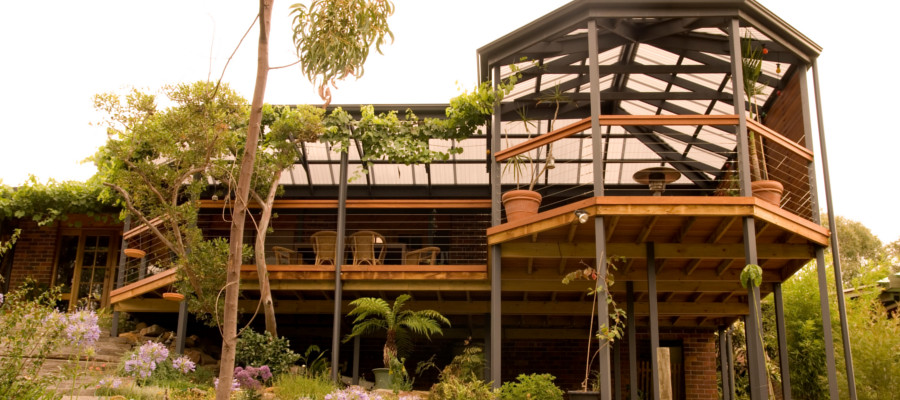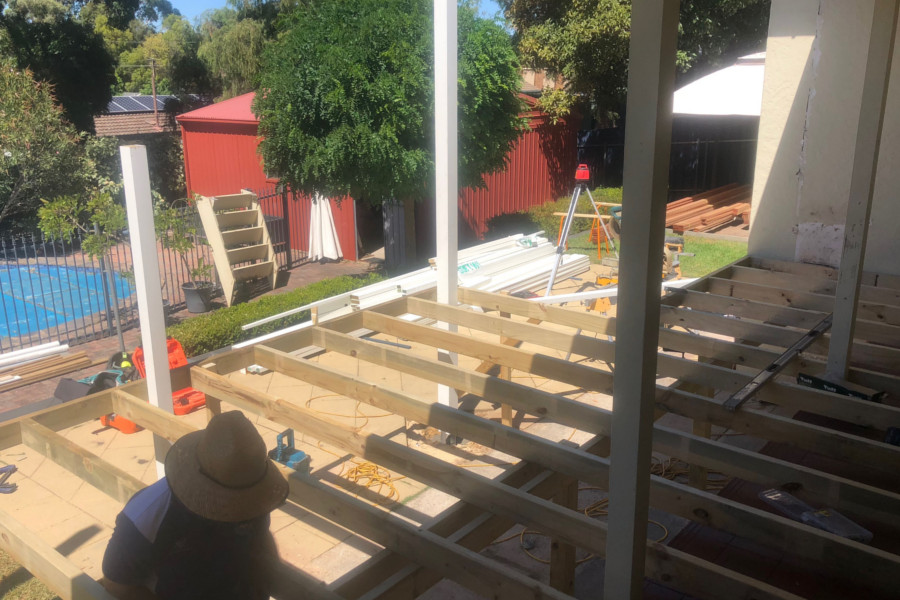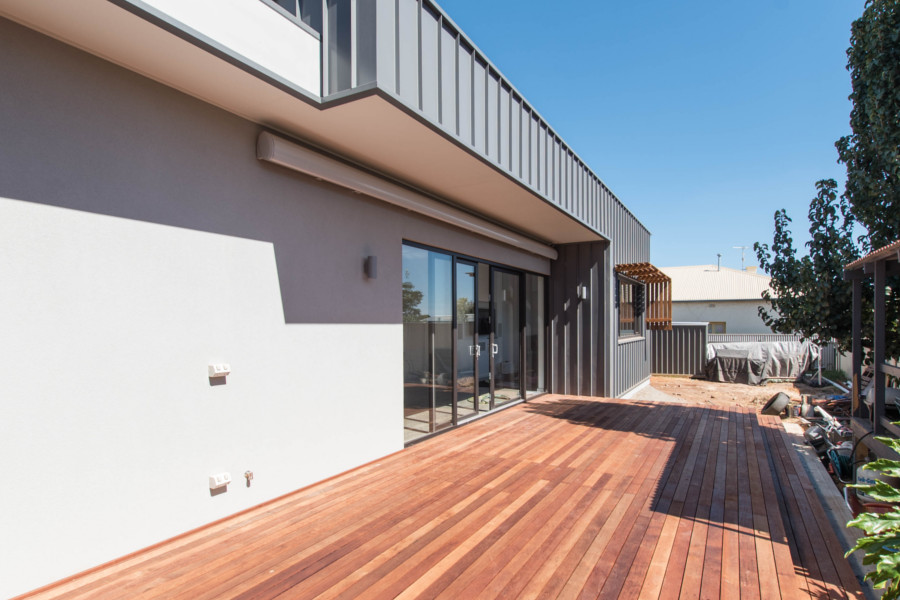
If your deck is elevated and there is sufficient space underneath it, you can use it as additional storage space. However, when it rains water could seep through the gaps between the decking boards and flow down into the space underneath the deck. If the available space is partially below the ground level, you may also face the same issues and challenges as when trying to keep water out of basements. Especially in areas that experience high levels of rainfall, it is essential to waterproof the area underneath your deck if you intend to use it for storage.
The quickest and most straightforward way to prevent water from getting through the deck boards is by attaching corrugated roofing panels just below the substructure. This will catch the water that gets through the gaps. We recommend screwing the roofing panels beneath the deck. If the area to be covered is rather extensive, you may need to attach additional beams beneath the joists to where the sheets can be screwed.
Also remember to attach the roof panels at an inclined angle to allow the water to drain out through one side. This is where you will then attach the furring strip and drain to channel all that water safely away and ensure that the area under your deck stays nice and dry. In essence you are going to create a roof immediately underneath your deck. This solution tends to be quick, inexpensive and effective. If you do not intend to transform the area under your deck into a comfortable and appealing living space, and all you want to do is keep it dry, then this method should work nicely for you.
You can use any type of waterproof roofing panels, including corrugated galvanised iron, polycarbonate sheets and fibre cement sheets. Test your underdeck “roofing” by running some water from a hose directly on the roofing surface. You may need to adjust the level and direction of the incline to make sure the water flows out to where you want it to — toward the gutter and drain assembly.
Softwoods
Softwoods is an independent, family owned company that has been trading for over 30 years. In that time we’ve worked hard to build a business that we’d like to deal with if we were building in our own backyards. We’re community minded, environmentally conscious, and always focused on our customers experience.
ABN: 49 076 530 848
Our Locations
573 Port Road, West Croydon SA 5008
Phone (08) 8346 1499
Email [email protected]
493 Wright Rd, Modbury SA 5092
Corner Wright & McIntyre Roads
Phone (08) 8396 4044
Email [email protected]
28 O’Sullivan Beach Road
Lonsdale SA 5160
Phone (08) 8384 5133
Email [email protected]
Suite 15 Plaistowe Mews
102 Railway Street
West Perth WA 6005
Phone 1300 737 465
Copyright © 2024 Softwoods • Pergolas, Decking, Fencing, Carports, Roofing • Site by Adelaide Websites
© 2025 Softwoods - Pergola, Decking, Fencing & Carports, Roofing.



